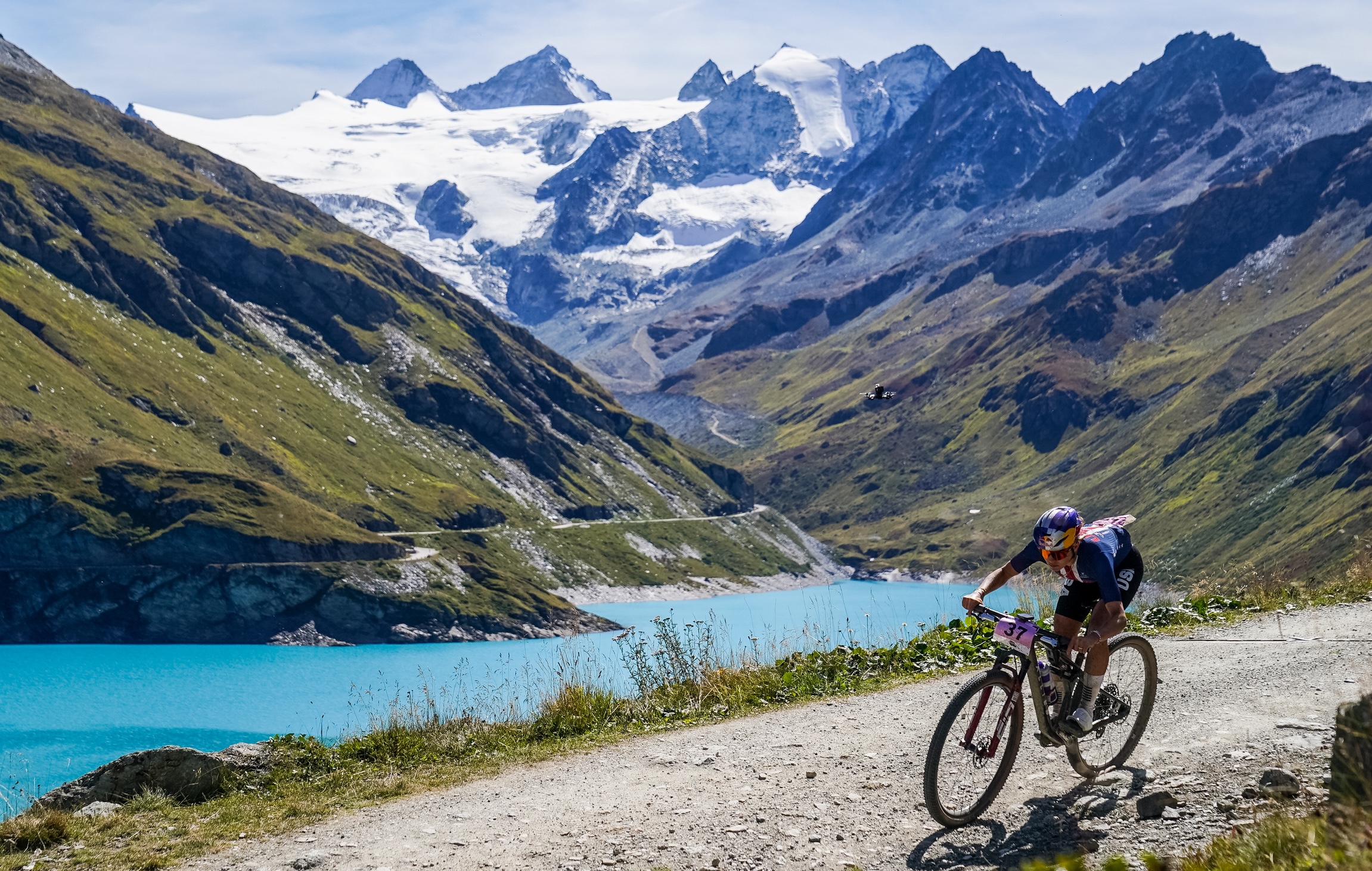Best winter cycling shoes: Keep your feet warm with winter-specific footwear
The best winter cycling shoes will offer extra protection in the cold and wet

The best winter cycling shoes can add extra protection and warmth on freezing rides in the depths of winter. I've spent hours and hours out in the cold and wet putting the shoes in this guide to the test.
When winter arrives, many cyclists are preoccupied with trying to keep their feet warm. A dedicated winter cycling boot or shoe, often with extra insulation, a rugged construction and a waterproof membrane, can be a great solution.
Winter cycling shoes are generally a little bulkier than regular cycling shoes, especially in the common 'boot style', which has a higher ankle for extra protection. Winter cycling shoes are available in on and off-road versions, similar to what's on offer in our guide to the best cycling shoes or the best gravel shoes guide.
Now, you can wear a pair of the best cycling overshoes over your regular shoes. There are pros and cons to both, and luckily, we are blessed with many choices when it comes to kit in the cycling world. For certain situations or rides, a winter boot may be the way to go. For me, they are suited to everything bar intense road cycling, where I prefer a lighter shoe.
A good pair of winter cycling shoes can also be a cornerstone of how to keep your feet warm, along with the best winter cycling socks. My pick of the bunch
Head to the bottom of the page for our guide on how to choose the right pair for you and expert buying advice on what to look for when choosing.
Quick List: Best winter cycling shoes

The Sidi Nix is Sidi's updated winter road cycling boot. Available in three different colours, these boots use a Gore-Tex membrane, feature snug Primaloft insulation inside and have a wider, straighter overall fit, which makes them really comfortable.

The Lake CX146 offers stout winter protection and may especially suit riders with wider feet or who do less intense riding.
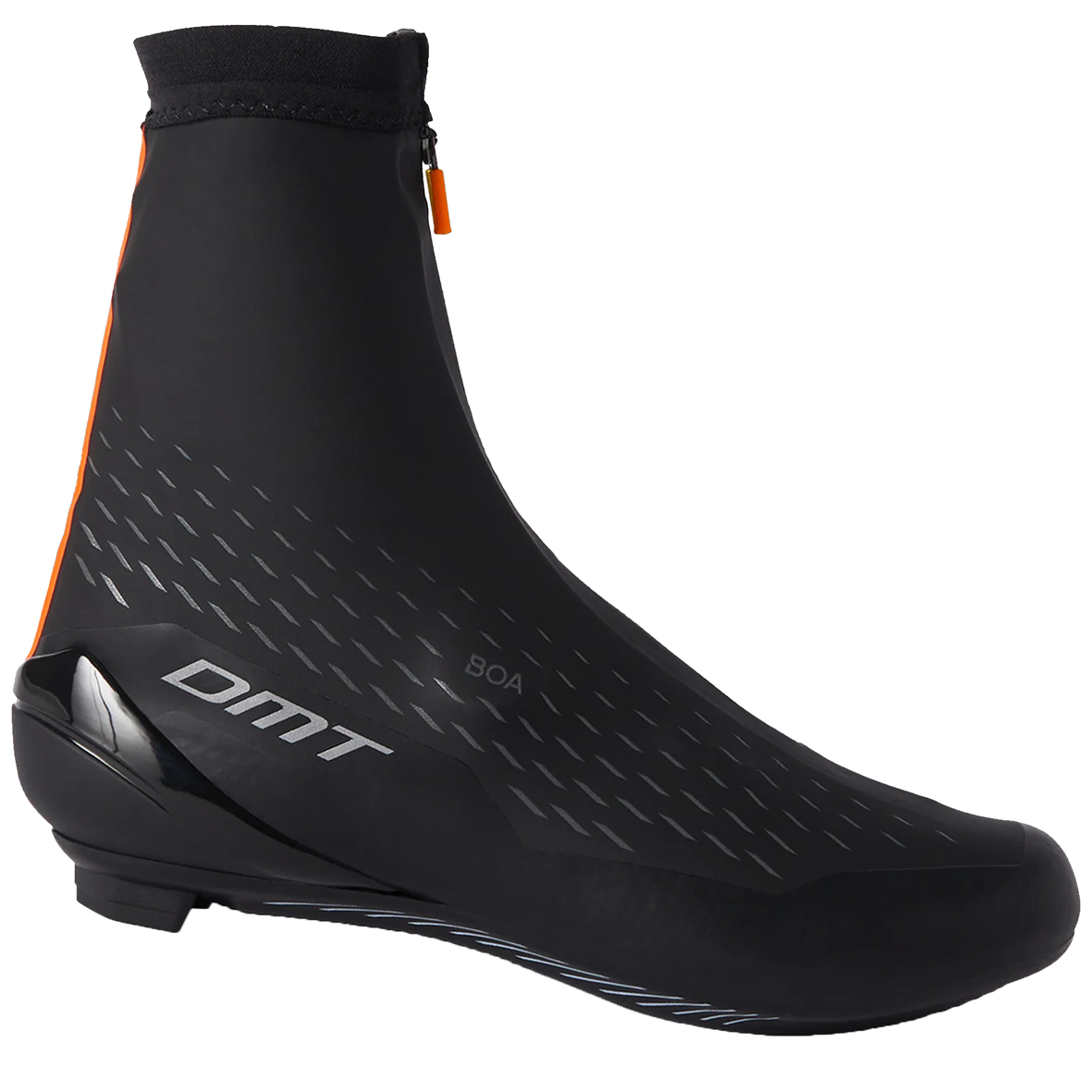
The WKR1 from DMT is a sleek winter shoe that features an integrated zip-up outer cover over a knitted DMT road shoe for added protection.
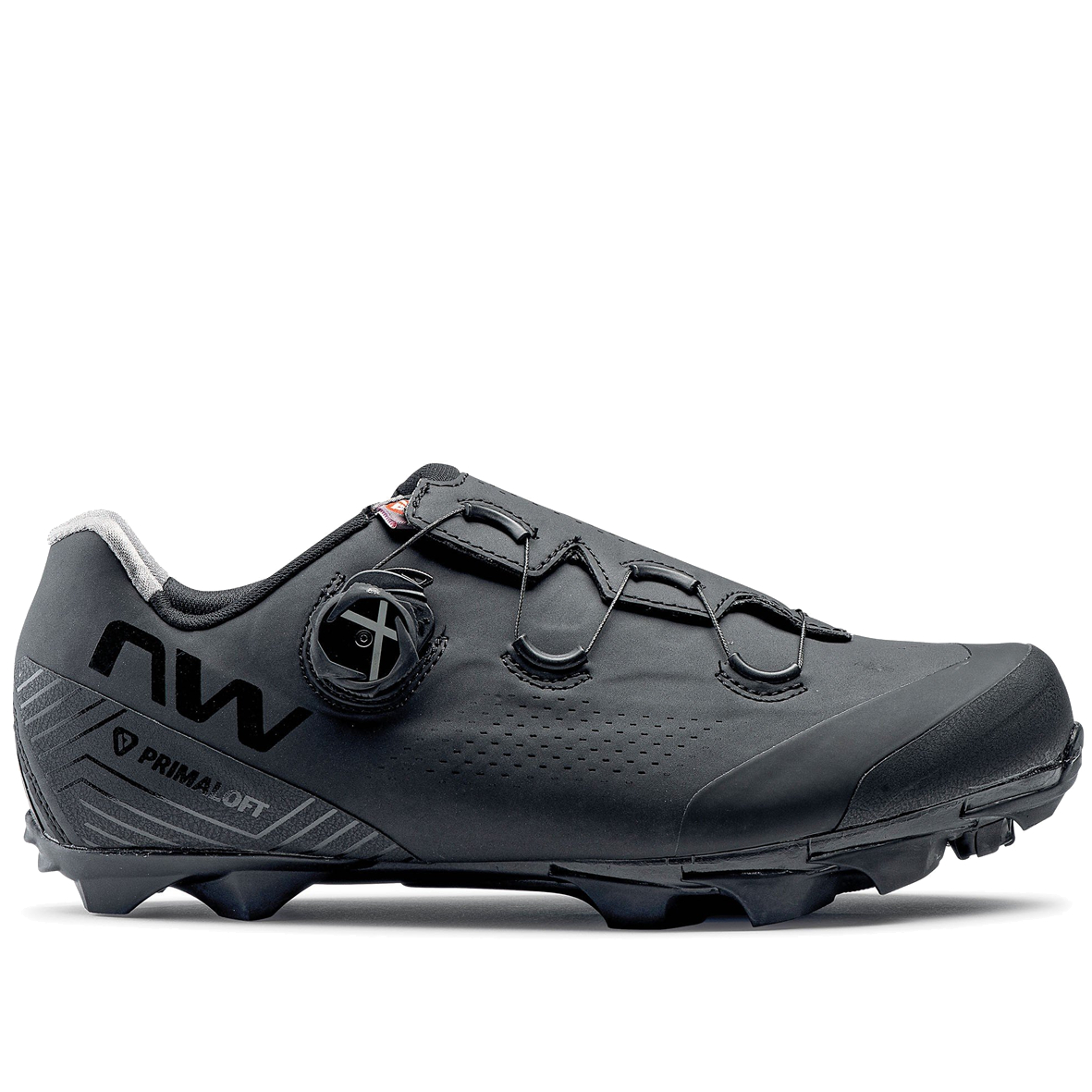
If a winter boot isn't for you, these are insulated road shoes from Northwave. They are filled lightly with Polartec Primaloft insulation; you can pair them with overshoes to boost winter warmth.

The Flagship GTX boots from winter specialists Northwave are packed with features to keep your feet warm and dry when riding off-road. These are top-end, hardy and stylish boots that will get you through a winter with ease.
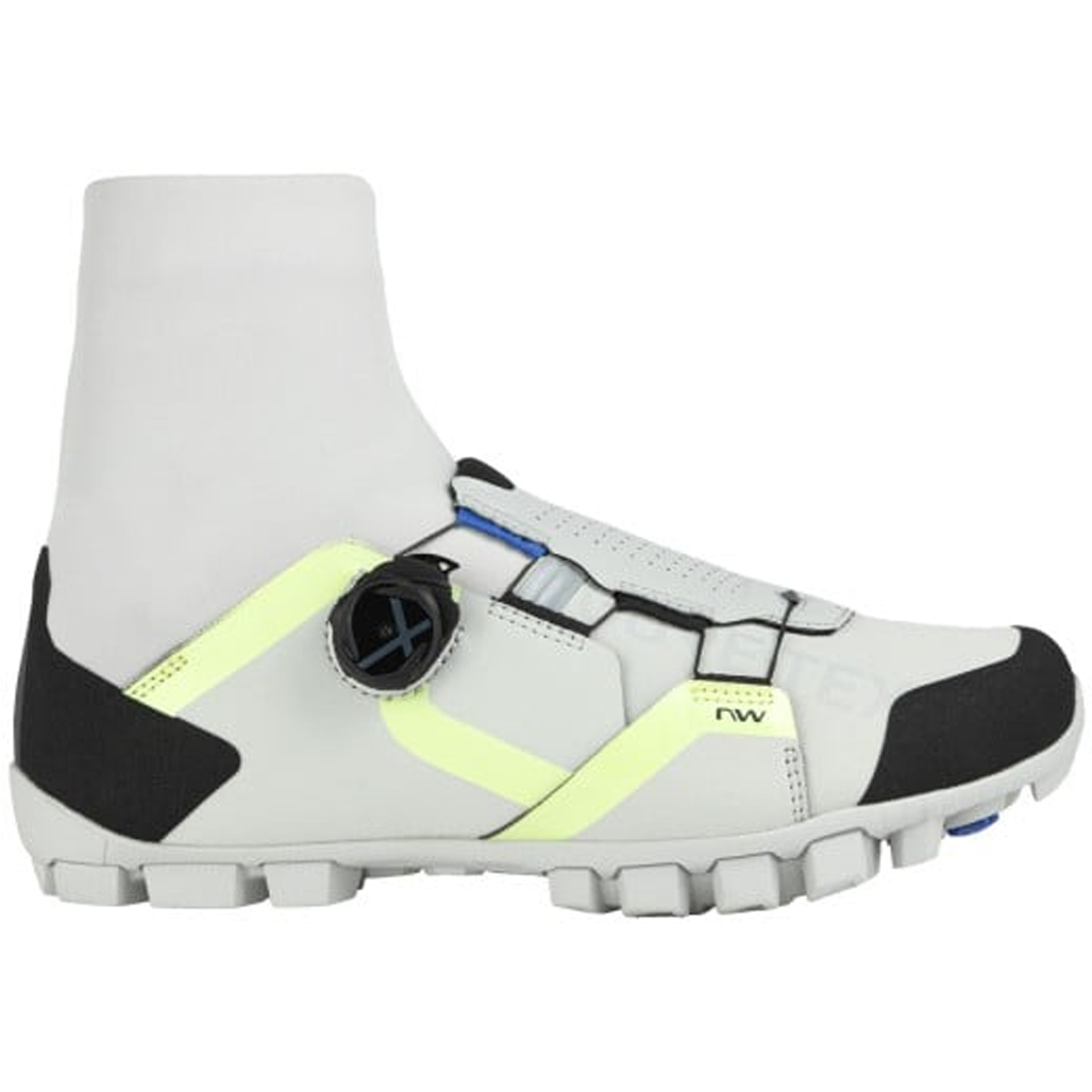
New for this year, the Northwave Celsius XT Arctic GTX are highly comfortable, waterproof and insulated off-road cycling shoes. Their flexible and very comfortable soles mean they are also excellent if you do a little more walking in your shoes or during off-road adventures.

I have been testing winter cycling shoes for over two years, both in winter and warmer weather. I've tested over 10 pairs in the last several months and have deliberately tried them in wet and cold weather, riding through standing water and deep puddles whenever I see them to test their waterproofing and warmth.
We will all experience cold differently, but I've tried my best to test these shoes when riding at lower and higher intensities and in a range of conditions to provide Cyclingnews readers with the best possible buying advice.
Last updated on 3rd of October 2025
For our latest update, we added a new best overall shoe in the form of the Sidi Nix shoes. We removed the Gaerne G Ice Storm boot, feeling that it was bettered by other models now, and also had a very narrow fit. We added a new best off-road model in the form of the Northwave Flagship GTX, as well as another off-road model, the Northwave Celcius XT Arctic GTX. We also uploaded more imagery of us testing shoes in water, mud and ice, and testing them with a garden hose.
Best winter cycling shoes
You can trust Cyclingnews
Best winter cycling shoe
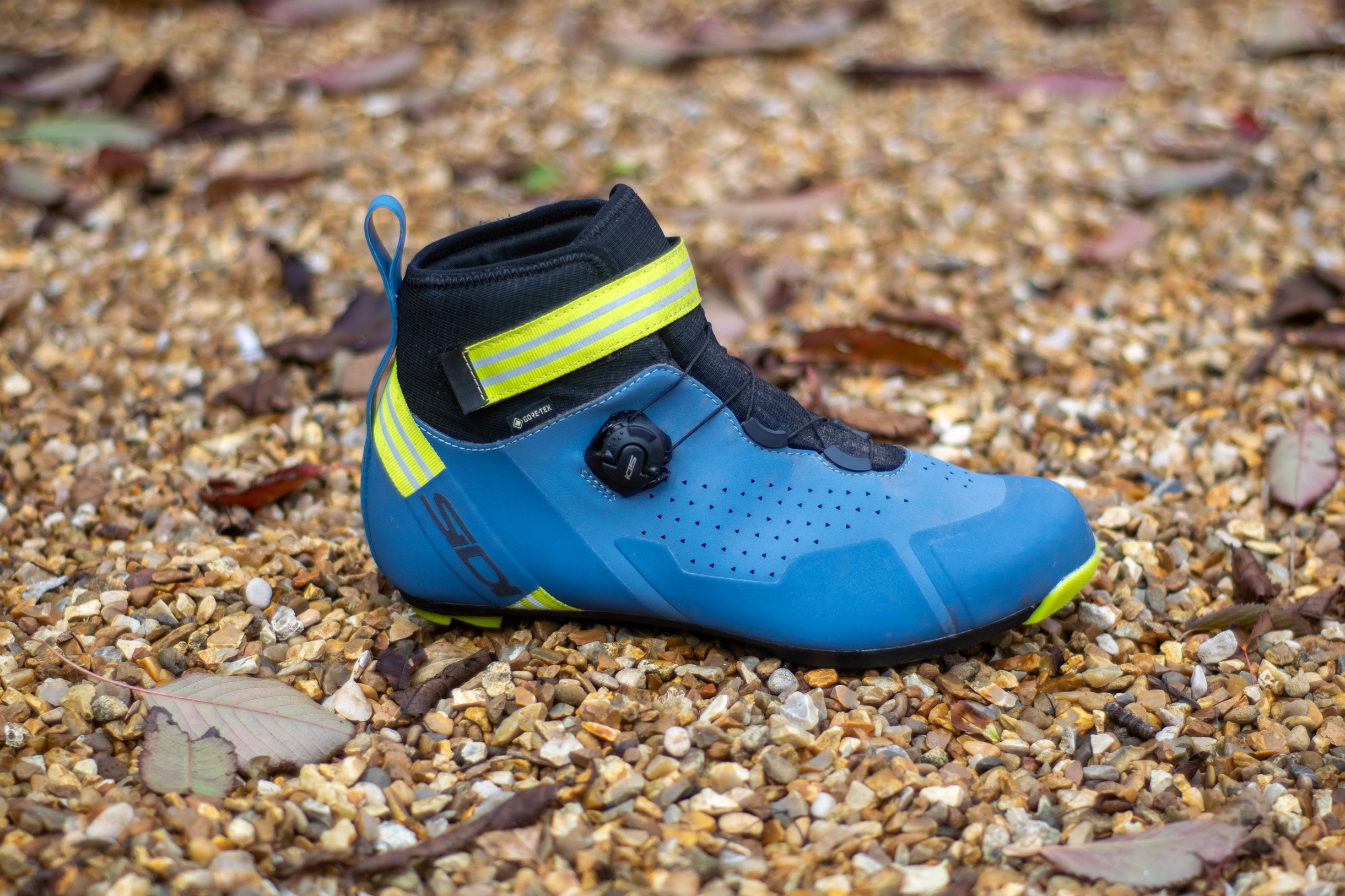
Specifications
Reasons to buy
Reasons to avoid
✅ You want a wider, roomier shoe: The Nix have a rounder toe box and are wider than many winter boots. I've found them to be very comfy on long, cold rides.
✅ You want a hardy, good-quality winter boot: When it comes to winter boots, you should accept that the ankles are a weak point when it comes to water. But if you want a hardy, quality winter boot for all manner of winter riding, this is a great option.
❌ You don't tend to use mudguards: These shoes, like many winter boots, are susceptible to water ingress at the ankle openings, and you will get wet feet with lots of spray, especially if you don't ride with mudguards.
❌ You like to tighten your shoes down well: The single deal and velcro strap don't allow you to really cinch these shoes down tight. I'd argue winter boots aren't really designed for that, but if you like to tighten your shoes down, you may end up frustrated here.
The Sidi Nix take the top spot when it comes to a winter road cycling shoe. The Nix replaced the Sidi Gore model last year, and Sidi updated the shoe's shape, bringing it up to date with wider, rounder shoes, which are generally a lot more comfortable.
They aren't as chunky as the Lake's, which are a bit too bulky for regular road riding for me, and they are much more comfortable than the DMT shoes; they strike a strong all-around balance.
The Nix uses a nylon sole, which isn't as rigid as a full carbon fibre offering. For me, though, this was just fine for less intense, cold winter rides; carbon fibre also isn't brilliant when it comes to thermal efficiency.
The soles use a Gore-Tex liner for waterproofing and close using a single Sidi dial and a velcro strap that wraps around the ankle.
Inside is covered is a fleecy, borg-like material that really helps your foot feel snug; coupled with the more generous fit, it's one of my favourite things about the shoes, and they have kept my feet warm for hours at close to freezing.
The outers are highly water-resistant and tough, but as is the case with pretty much every winter boot on the market, the ankle area can be an Achilles heel when it comes to waterproofing. I recommend using a set of the best mudguards with these shoes, as water will penetrate the ankles on very wet days. Try with some thin waterproof socks for further wet-weather protection.
The shoes are available in black, blue and white colours for a bit of variation, and I've found them very durable and easy to clean. For all-around winter road riding, they are an excellent choice and will keep your feet feeling snug and comfortable.
Read our Sidi Nix in-depth review.
Best budget


Specifications
Reasons to buy
Reasons to avoid
✅ You want a highly protective winter cycling shoe: The Thinsulate 200gr insulation, high cut and DWR coating microfibre uppers are effective against deep winter conditions.
✅ You want a wide-fitting shoe: Lake is known for having a wider fit, and the CX146 comes in both regular and wide options.
❌ You have narrow feet: Lake's wider last might not offer the secure fit needed when riding. Those with narrow feet will be better suited to a shoe like the Gaerne G. Ice Storm GoreTex.
❌ You want to do fast winter riding: Stiff uppers give the Lake CX146 a sturdy feel similar to a walking boot.
The Lake CX146 is a hefty winter road cycling boot that's rated for use down to -4 degrees. Lake also offers it in a two-bolt MTB version, and it sits below the -20-rated MXZ400 in the temperature ratings, but that is a really specific deep winter shoe in the Lake winter range.
The CX146 is available in regular and wide options, and the brand is well known for accommodating wider feet and focusing on fit and foot sizing. If you have really wide feet, then you may want to take a look at the CX146.
The shoes have DWR coating microfibre uppers, which feel like leather. Use a large front velcro flap which closes over most of the single-dial BOA M4 closure system. There's some prominent reflective detailing and a good-sized rear heel pull tab to help you pull them on.
The CX146 is the only shoe in the guide to use the burly BOA M4 dial, easily the largest BOA here and with a big textured gripper to make adjustments with cold or gloved hands easily.
The shoes have a walking boot feel about them; pulling them on makes you feel really protected and ready to face the elements. And though they won't be the best option for faster riding, for that, look to the DMT or Northwave Magma options. If you want a quality option for the worst of the winter weather for a range of riding, the CX146 will do well.
Read our Lake CX146 in-depth review.
Best lightweightweight winter shoe
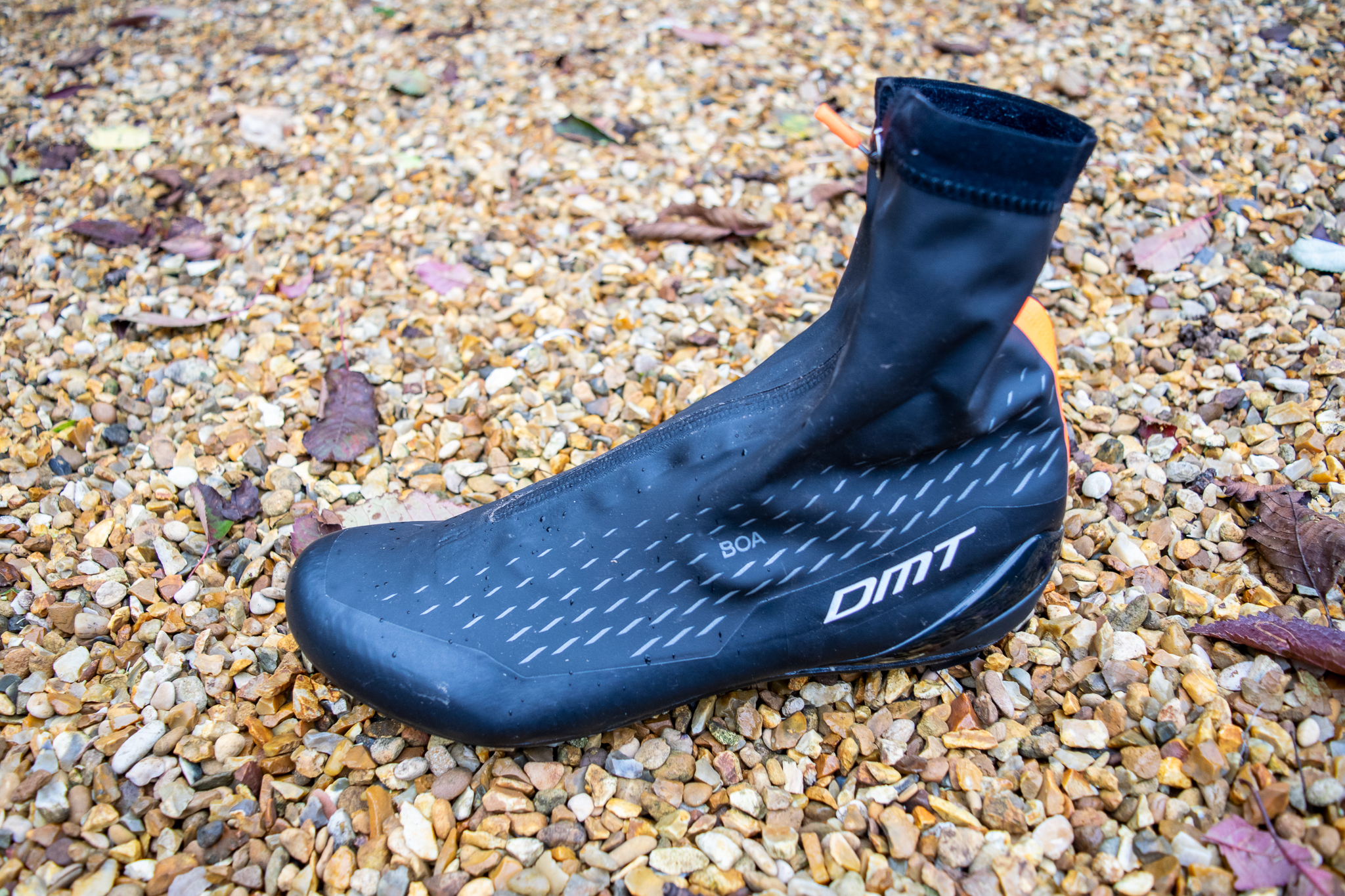


Specifications
Reasons to buy
Reasons to avoid
✅ You want a low bulk winter shoe: The DMTs are a less bulky shoe than some options here and do feel faster and lighter than a bulky boot.
✅ You still want to wear overshoes too: The sleek nature of these shoes means you could double up with a standard overshoe over the top to really maximise protection.
❌ You want all-out warmth: There are warmer dedicated winter boots out there. I fear you may end up with cold feet in these single-digit temperatures.
❌You need a wider, rounder or larger volume shoe: These shoes are on the narrow side, and the toe box isn't massive. If you're a Lake fan or user of wider shoes, they may not be for you.
Some winter cycling shoes can feel a little bulky and don't leave you feeling very fleet of foot on a ride.
If you are looking for something that's a little racier and has a silhouette that's similar to a regular road shoe, whilst still adding protection, you may want to have a look at the DMT WKR1.
Built around a three-bolt, nylon sole (there is a 2 bolts MTB version as well), the WKR1 is comprised of a woven 'inner' cycling shoe just like a regular road shoe you would see in the summer. This is permanently attached to the soft shell outer layer of the shoe you can see. So you're getting a double layer of protection and essentially a thin incorporated overshoe.
The inner shoe, which is bright orange, uses a single BOA Li2 dial for foot retention and the woven upper is comfortable and soft. The outer booty then zips up around it using a zip straight down the middle. You can even add an overshoe over the top if you want to.
I found the ankles a little loose, but just tucked them under my bibtights, which helps prevent water ingress. They kept my feet dry over a horrid two-hour ride in the wet. I would recommend sizing up as the WKR1s do run a little narrow, and you'll probably want a bit more wiggle room for thicker socks in winter.
Read our DMT WKR1 in-depth review.
Best winter road shoes


4. Northwave Magma R Rock
Specifications
Reasons to buy
Reasons to avoid
✅ You want warm feet: The Primaloft insulation and thicker insole help boost warmth when riding in dry winter conditions.
✅ You want a regular cycling shoe with added insulation: By foregoing an ankle gater or high boot cut gives the Magma R Rock a stylish look and low-bulk fit.
❌ You ride in the wet: The low-cut makes it easy for water to get into the top of the shoe, to keep your feet dry, you will need to pair the Magma R Rock's with an overshoe.
If a higher ankle, cuff and general added bulk of a full-on winter boot aren't what you need, but you still want some extra protection, then the Northwave Magma R Rock shoe looks just like a regular cycling shoe but packs extra Primaloft Gold insulation and protection within the shoe to add warmth and comfort. Essentially, the shoes have built-in thermal insulation.
Unlike the Flagship GTX shoes further down, which get the kitchen sink thrown at them, the Magma uses a nylon, three-bolt sole, and won't accept Speedplay four-bolt cleats. The shoes use a single SLW2 dial to tighten things down, and there's a small red Primaloft tag near the tongue that hints at the extra insulation. The toe box is also a lot rounder and wider than some of the pointer ones here, so it should provide more room.
There are, however, cleverly added thermal features for not very much more weight. There's a thicker-than-average Northwave Arctic insole, which is soft and a sort of additional undersole beneath this, which should aid warmth.
Inside the shoe is soft and cosy, and I'd say the majority of the insulation is in the forefoot area. You can feel the extra plushness of the added material in a few areas.
On foot, they feel like regular cycling shoes, so if you want things to feel a bit more nimble, they are a strong option. They do feel warmer, though in cold weather and were impervious to spray on my hose test, where they got subjected to a soaking.
They will pair really well with overshoes, and with a good pair, will leave you with really warm feet. You can also pick them up for a little less money than a lot of the other shoes in this guide.
Best for off-road

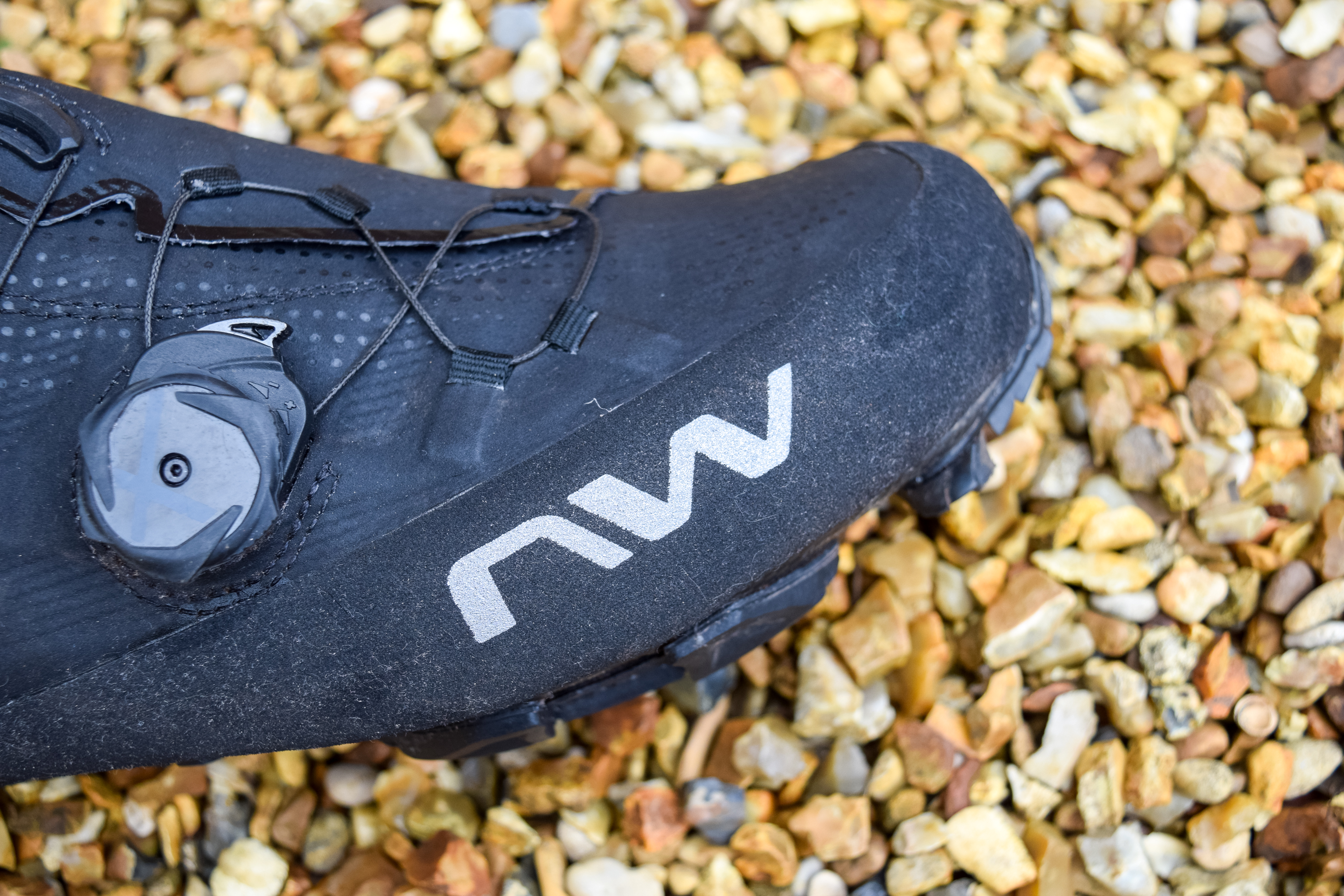
Specifications
Reasons to buy
Reasons to avoid
The Flagship GTX is winter shoe specialist Northwave's flagship off-road winter boot, and it's a beast.
If you're looking for a winter shoe to use for gravel and MTB, the GTX will have you covered.
It featured a Michelin carbon sole, which is pretty stiff, a top-end Gore-Tex Kelvin liner, insulated insoles, dual dial closure and hardy material around the lower outside of each shoe for protection.
I've worn them in ankle-deep mud and water, and nothing has penetrated the shoes. So they will be very well suited to muddy off-road adventures, where overshoes can sometimes come unstuck on rough ground if you are walking.
They also, despite their heavy-duty nature, feel as clunky as some boots on foot, in part thanks to the neoprene collar, and I quickly got used to them. They will also look very good with riding trousers, etc.
The ankle, like all winter boots, is the weak point if there's tonnes of spray (less common off-road) or if the height of water exceeds it. Other than that, if you're riding off-road all winter, these boots should have you covered for years.
Read our Flagship GTX in-depth review.
Best to walk in
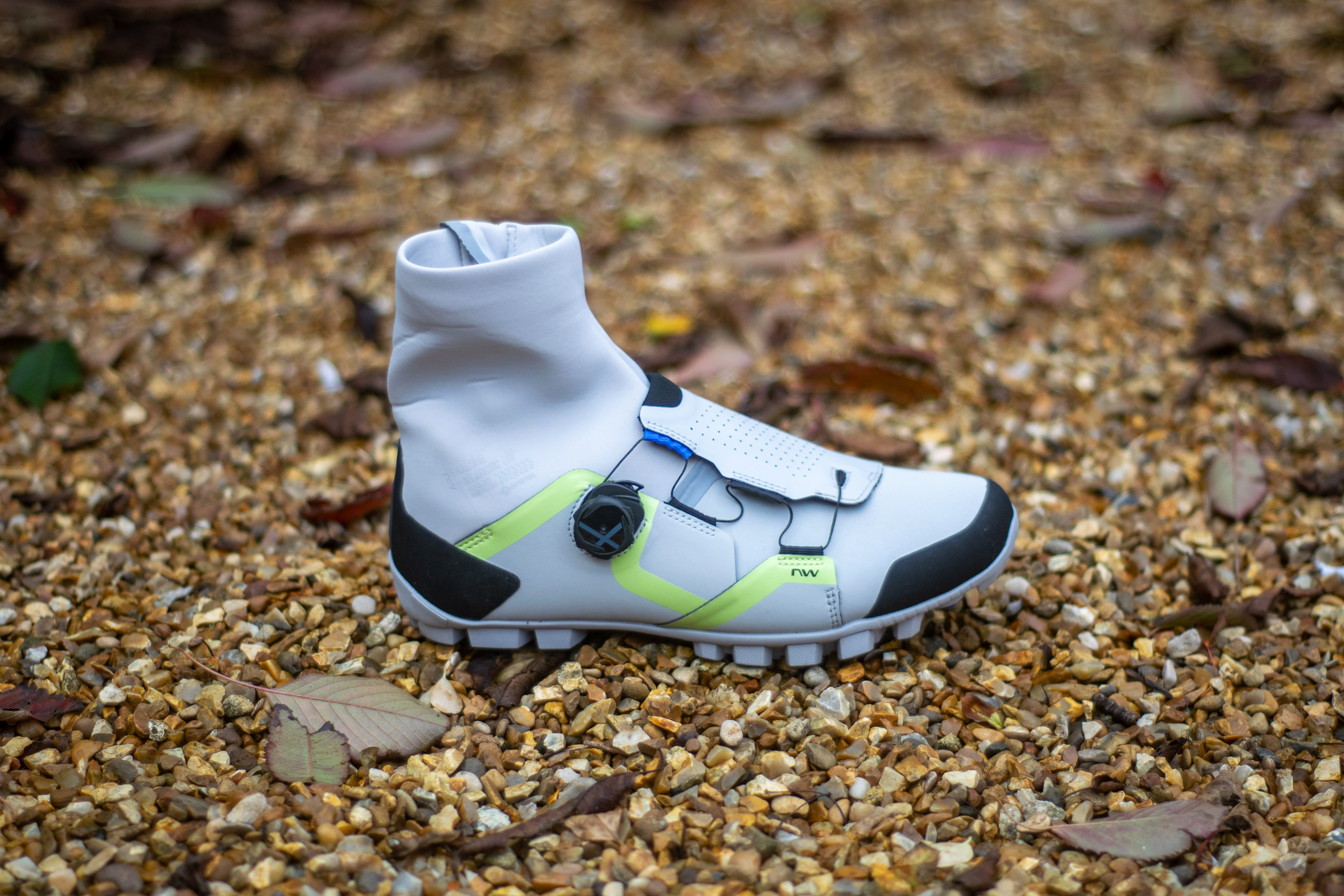

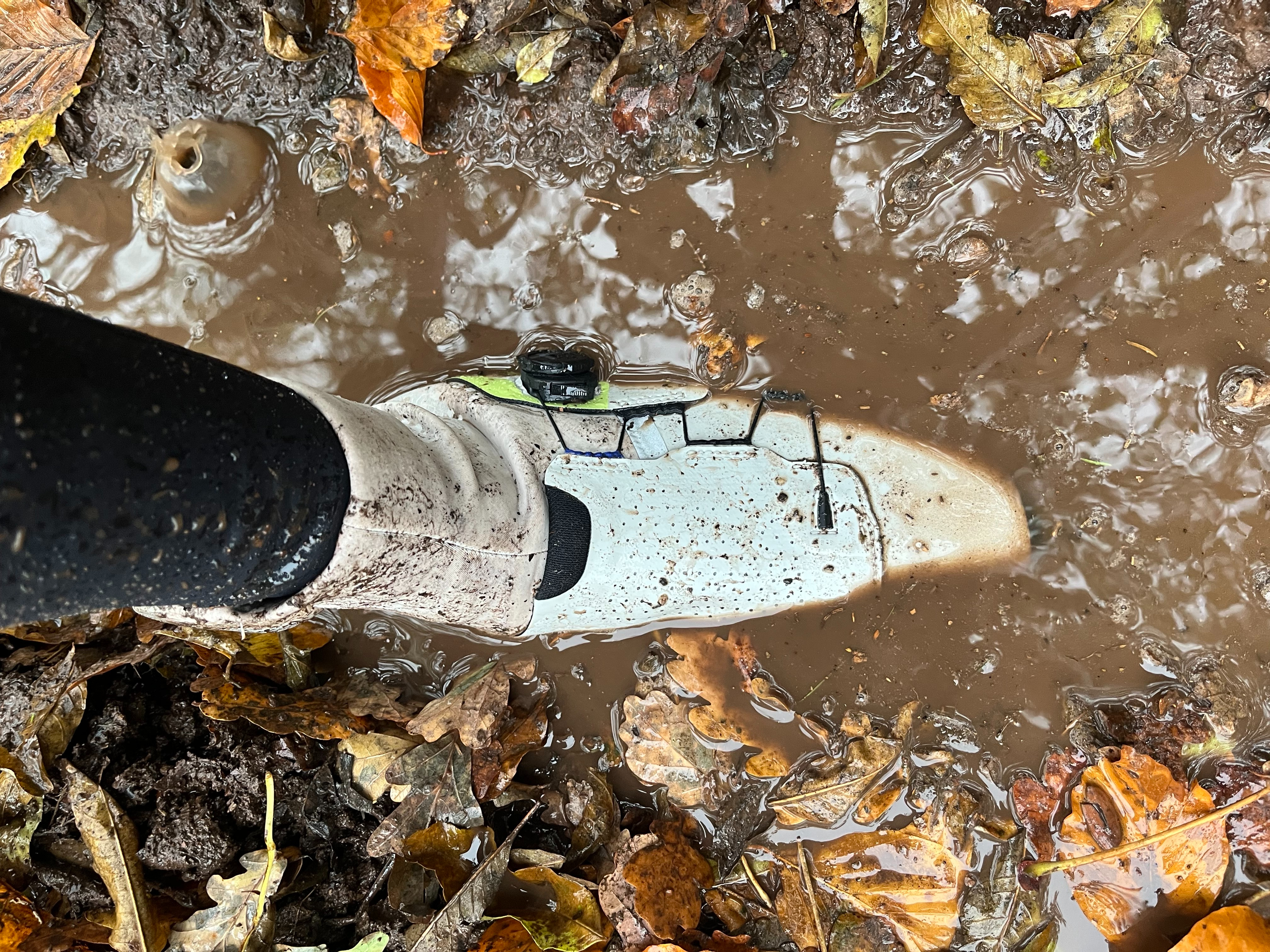
6. Northwave Celsius XT Arctic GTX
Specifications
Reasons to buy
Reasons to avoid
✅ You want a less chunky but capable boot: The Celsius boot with its neoprene collar just feels a little less chunky than some boots on foot. It's a nice balance between a shoe and a boot.
✅ You want to walk around easily: Northwave's Jaws Evo sole is very comfortable, and very well suited for walking in too, with a nice amount of flex.
❌ You want a very stiff shoe: If you still want a high level of sole stiffness, you may be left wanting more from these shoes. For more rigid off-road shoes, look at the Flagship GTX model.
The Northwave Celsius XT Arctic GTX is a new addition to the Northwave range for this year.
The Arctic GTX has some of the funkiest styling of any winter boot on the market, which I like. Historically, winter boots have been all black and a bit clunky.
These are two-bolt, off-road shoes that come in three colours. I've been testing the light grey colour, and the brighter colours keep things feeling a bit more nimble. There's also some handy reflective flashes and fluoro stripes.
The boots pull on, there are two handy pull loops to use, then the neoprene ankle collar zips up vertically, a Northave dial then tightens things down.
Inside is fleece-lined and insulated with Pimaloft Gold insulation, which feels super comfortable and really snug.
Waterproofing is excellent thanks to the Gore-Tex liner; nothing penetrated the shoes from my hose test or being submerged in a muddy puddle. As ever, the ankle opening is the weak point, so watch out there.
These shoes are also super comfortable to walk in, thanks to the flexible Northwave Jaws sole, which is similar to what I experienced on the Northwave Hammer Plus shoes, and it really is very nice. If you plan to do a lot of walking, too, look at these shoes.
I'd say these shoes size up slightly small; a half size more may be preferable for winter use.
Boots with colour options
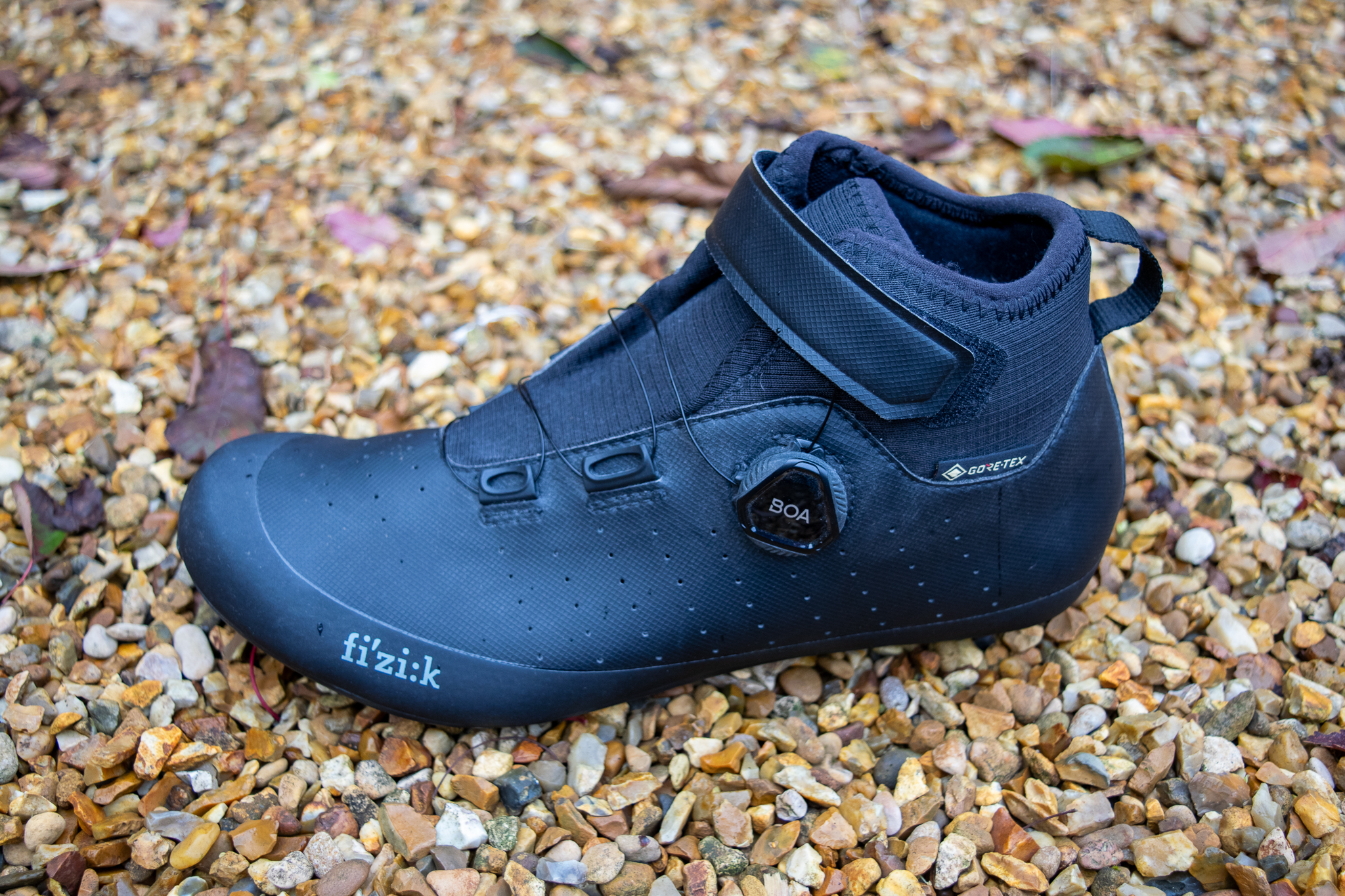
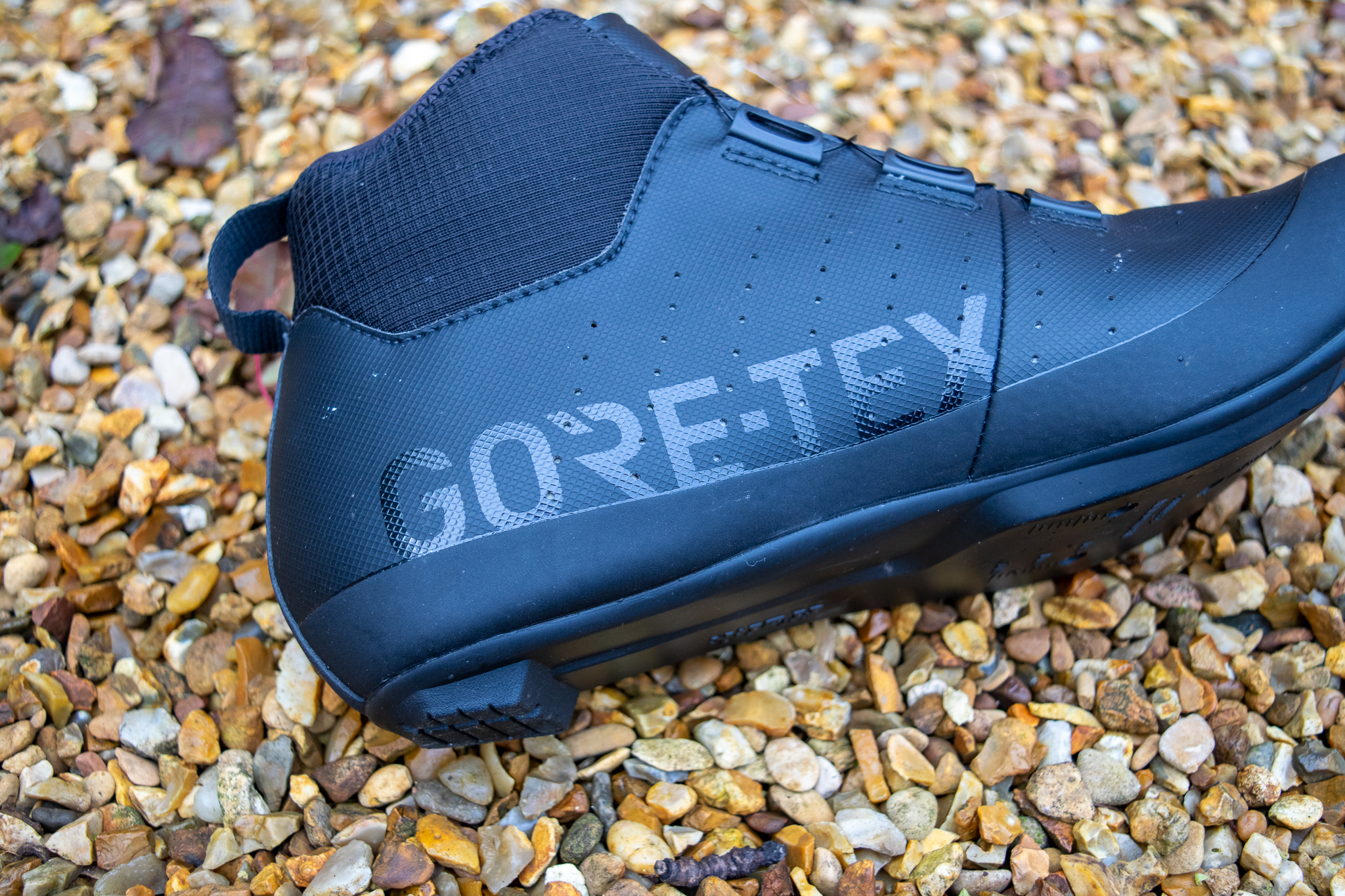
Specifications
Reasons to buy
Reasons to avoid
✅ You want a low-bulk lightweight shoe: Fizik has done a great job at giving these a slimmer silhouette whilst still offering great winter protection.
✅ You want white shoes: These, along with the Sidi Nix, are the only available white winter road shoes.
❌ You want guaranteed dry feet: The ankle is short, making it difficult to seal against the rain. Again, it's a weak point, and we recommend mudguards if using the shoes on their own.
The Fizik Tempo Arctica GTX is available in the standard black and, in a somewhat surprising move for a dedicated winter shoe, a bright white option. If white shoes are your thing, or you just want to feel a bit faster during the winter months, the white version may be the one to go for.
The Arctica GTX has a nylon sole with a three-bolt cleat drilling and no vents to prevent water ingress, it also may make them a little sweaty. The sole features moulded nylon heel and toe tabs that are non-replaceable. If you do some walking in your shoes, keep this in mind. There is also a small pull tab on the heel to help you get them on easily.
The shoes make use of a single L6 Boa dial and ankle closure Velcro strap, which helps things feel secure. Though the L6 Boa doesn't offer quite the same level of fine adjustability that the Li2 unit on the Gaerne shoes offers. The outers feature a Gore-Tex waterproof membrane and are claimed to be fully waterproof. Inside, there is a brushed fleece lining which extends down under the insole, which should help keep feet snug. The insoles themselves are also slightly fleecy, which is a nice touch, and the shoes feel cosier when you first put them on than the other winter shoes in the test.
The Arctica GTX feel closer to regular road shoes than a lot of more traditional winter boots, and if you don't want to go the whole hog, their slimmer silhouette might be a nice middle ground whilst still offering great winter protection. Don't be fooled into thinking Fizik have just glorified road shoes, though - these are warm, comfortable winter boots.
Read our Fizik Artica GTX in-depth review.
How to choose
If you're seriously considering investing in some winter cycling shoes, here's a quick list of things you need to consider.
If you are often riding hard on the road, I'd recommend a regular shoe and overshoe combination. For more relaxed winter cycling, a winter shoe may be better for you.
- Are you planning on riding outdoors, whatever the weather? Is it wet, cold or both? Consider the conditions you are riding in and choose a shoe that excels in those conditions.
- Do you ride with mudguards? If you ride in all weathers and don't have mudguards, water resistance should be a top priority. Wet feet will be considerably colder than dry feet.
- What type of riding are you doing? Would you be better off with lighter, more breathable cycling shoes for more intense riding or thicker insulation for slower, longer days out?
- Are you often walking in mud and wet conditions off-road? If so, opt for a MTB/gravel 2-bolt shoe with grippy tread and pair with a set of gravel pedals.
- What type of retention do you prefer? Most winter cycling shoes feature one or two adjustable dials for closure, but some will feature additional velcro or zipped closure.
Everything you need to know about the best winter cycling shoes
Do I need winter cycling shoes?
Winter shoes are a nice bit of kit to have in your winter arsenal. If you fancy a pair to wear in grotty or cold weather, go for it.
However, if you have other priorities and cycling kit to spend your money on, you can always go for regular shoes paired with good-quality overshoes, and this is probably what the overall majority of riders do. The money you save could be spent on next year's summer tyres.
If you want some winter-specific shoes but don't have an unlimited budget, check out the Northwave Magmas. You may be able to get a deal on them, and they are quality shoes that do add warmth and comfort. You can also wear them with overshoes.
At the other end of the scale, if you have cash to splash and want a top-end winter shoe, go for it. They will prove useful in the deep winter and boost morale.
How should my winter cycling shoes fit?
Firstly, and most importantly, is to find a shoe that fits. It seems obvious, but bear with us. A shoe that hurts your feet at room temperature is going to be exponentially worse in the cold, so it's essential to find a pair that fits comfortably and that isn't too narrow.
Like shopping for a road shoe, it's important to find some shoes that fit your feet properly. After all, everyone's feet are different. It's a good idea to try shoes before you buy at a local shop, but if you can't do this, use the brand's sizing guide and even send them an email to enquire about sizing if you aren't sure, or even order two pairs to try and return the ones that aren't right.
If you do want to allow for a bit of extra room for airflow and or heavier-weight socks, then you could always leave your shoes a little looser. A whole size difference may affect the ability to achieve optimal cleat positioning.
Do I need a carbon fibre sole for winter cycling shoes?
You don't need a carbon fibre sole for winter shoes, and the majority of shoes in this guide don't have one. It would result in an even more expensive shoe for a start.
If you want a stiffer shoe or still ride hard in the winter on chain gangs, etc, then a carbon sole may be preferable for you, but I certainly don't see it as an essential.
How tall should my winter cycling shoes be?
This is a tricky one, and in my opinion, ankle designs and openings are the Achilles heel of winter cycling shoes and boots.
If a boot-type overshoe has a higher ankle collar that is a little more open, that may make it more vulnerable to water penetrating the shoe in that area. Either from rain or spray, or water from soaked tights running down into your shoes. Potentially leaving you with cold, wet feet. A bulkier ankle area also makes fitting an overshoe difficult or unsightly at times. Yet the overshoe is the very thing that could help seal this area and aid waterproofing.
There is a range of shoes in the guide, from the Northwave Magma shoe to the Sidi 'boot' style option. In general, I'd recommend going for shoes with a more fitted ankle opening. It's also worth bearing in mind whether you want to pair overshoes with the shoes or not, and how easy this will be to do.
Which cycling shoe retention system is best?
Among the best winter cycling shoes, you'll find Boa dials and Velcro.
Every shoe in this test has a Boa or wire closure system, and some shoes, like the Fizik's pair, this with a velcro strap or closure, typically around the heel. A boa system allows you to generally achieve a more comfortable fit and achieve it very quickly. Laces on a winter shoe would not work as well the same can be said for Velcro.
Are winter cycling shoes worth it?
Full disclosure, if you're doing a lot of outdoor cycling in cold conditions and maybe a bit of commuting too, winter shoes are probably going to be a nice investment and will provide comfort and protection. That's what I like about them, the snug feeling they provide, extra warmth and protection.
If you're not logging tonnes of miles outside, live in a warmer place or tend to ride at a higher intensity, which generates more heat and places an emphasis on lighter kit, road shoes and overshoes are going to be a better solution for you, and I wear my road shoes and overshoes for faster or more intense road rides.
How can you keep your feet warm when cycling in winter?
Ah, the classic question!
There are a few different things you can do to help ensure your feet stay comfortable during cold winter riding, and we cover some of them in our best cycling overshoes guide.
Let's start before you leave the house, ensure your feet are warm, and you are wearing some warm socks. Padding around in the garage barefoot and getting ready won't help. Also, warm up your shoes before you ride. Leaving them in a cold garage or porch the night before, etc, won't help, as they will be chilly when you pull them on.
Using some quality overshoes or winter cycling shoes, as we've been discussing here, will also help hugely during the ride.
You can also use things like windproof socks, and embrocation on your feet and leaving your shoes a little looser should also promote airflow.
Lastly, ensure the rest of your clothing is right. Dress for the conditions and ensure your core can stay warm. This will aid blood flow to your extremities.
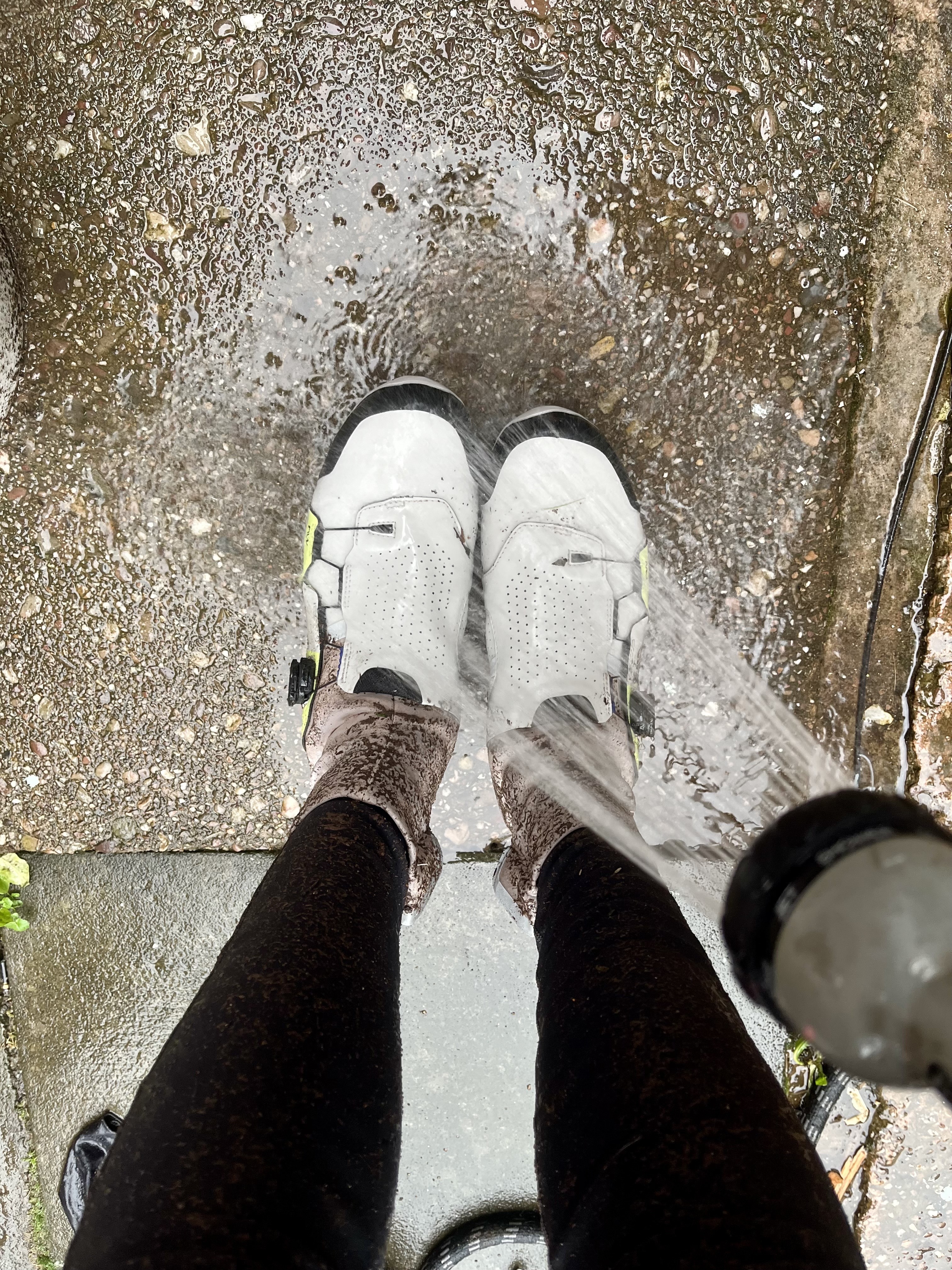
How do we test?
I have researched each shoe in the guide, sending any technical questions I have had to the brand representatives themselves.
I've inspected, weighed and photographed each shoe and then ridden in them in a range of conditions, deliberately trying to go for cold, wet or rainy conditions to test their capabilities.
I've also subjected them to a garden hose shower test to put their water resistance to the test. To gain an understanding of how they stand up to spray and rain I used a light 'shower' hose setting to try and replicate rain and spray, rather than just blasting them like a pressure washer.
The latest race content, interviews, features, reviews and expert buying guides, direct to your inbox!

Tom joined the Cyclingnews team in late 2022 as a tech writer. Despite having a degree in English Literature he has spent his entire working life in the cycling industry in one form or another. He has over 10 years of experience as a qualified mechanic, with the last five years before joining Cyclingnews being spent running an independent workshop. This means he is just as happy tinkering away in the garage as he is out on the road bike, and he isn’t afraid to pull a bike apart or get hands-on with it when testing to really see what it’s made of.
He has ridden and raced bikes from an early age up to a national level on the road and track, and has ridden and competed in most disciplines. He has a keen eye for pro-team tech and enjoys spotting new or interesting components in the wild. During his time at Cyclingnews, Tom has already interviewed some of the sport's biggest names including Mathieu van der Poel, Tadej Pogačar and Alberto Contador. He's also covered various launches from brands such as Pinarello, Ridley, Specialized and more, tackled the Roubaix Challenge sportive aboard his own rim-brake Cannondale SuperSix Evo, tested over 20 aero helmets in the wind tunnel, and has created helpful in-depth buying advice relating to countless categories from torque wrenches to winter clothing.
